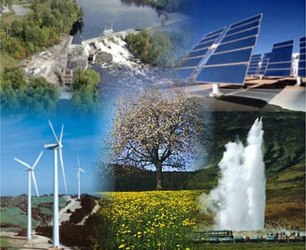
Greentech Lead America: China’s sharp focus on renewable
energy has paid off as the country is set to continue its domination of the
global renewable energy market, according to Ernst & Young’s latest
quarterly global Renewable energy Country Attractiveness
Indices report (CAI).
CAI indices provide scores in 40 countries for national
renewable energy markets, renewable energy infrastructures and their suitability
for individual technologies.
China has quadrupled its solar capacity target to 50GW by
2020 and begun an accelerated domestic installations program to tackle the
oversupply of solar panels. During Q2 2012, China remained at the top of
the All Renewable Index (ARI). During this period, the US dropped 1.5 points,
to share second position with Germany.
Despite the growth in renewable energy index, China will
have to deal with a number of challenges including the oversupply of wind
turbines and solar panels, and resolving grid transmission issues.
The drop in U.S’ ARI was due to ongoing uncertainty over
the country’s long-term renewable energy strategy and a failure to indicate if
there will be an extension to the critical Production Tax Credit (PTC) for wind
projects. Germany gained as a result of the German government’s proactive
approach to addressing barriers to offshore wind development and creating
stability in the solar sector.
Gil Forer, Ernst & Young’s Global Cleantech leader,
said, “The upcoming elections have led to an understandable slowdown in the
decision making process in the US, while Germany is pushing ahead
with its ambitious renewable energy agenda — including the introduction of a
new solar PV tariff and compensation for offshore grid connection delays.”
The challenge facing Germany is making sure that the
necessary infrastructure is in place to ensure the renewable
power generated in the north of the country can be shipped to customers in
the south.
India, which recently suffered severe blackouts due to
grid failure, has been ranked fourth despite speculation that the country has
attracted insufficient private investment to modernize its power infrastructure
and that renewable energy investment may suffer amid wider power system
reforms. India fell a point in the ARI as a result.
Despite dropping half a point, the UK has risen to fifth
place in the ARI, due to a fall in Italy’s ranking — a response to
worsening economic conditions. While a number of UK policy and subsidy
announcements were made during Q2 2012, the general consensus appears to be
that these announcements have fallen short of establishing transparency,
longevity and certainty, and have potentially created even greater uncertainty
within the market.
Q2 2012 saw total new investment in the sector
at US$59.6b up 24 percent from Q1 2012,
with China experiencing a 92 percent increase on Q1
2012. Europe and the US saw an increase in total new investment of 11
percent and 18 percent respectively in Q2 2012, the majority of which was
driven by new build asset finance.
Challenging market conditions were reflected in a 50
percent decline in the value of renewable energy deals in Q2 2012 compared with
the previous quarter.
“During Q2 2012, major utilities and energy groups
continued to rationalize their renewable energy portfolios through structured
divestment programs to dispose of non-strategic businesses and assets, as they
sought to deleverage their balance sheets,” said Ben Warren, Ernst &
Young’s Energy and Environmental Financial leader.
editor@greentechlead.com
